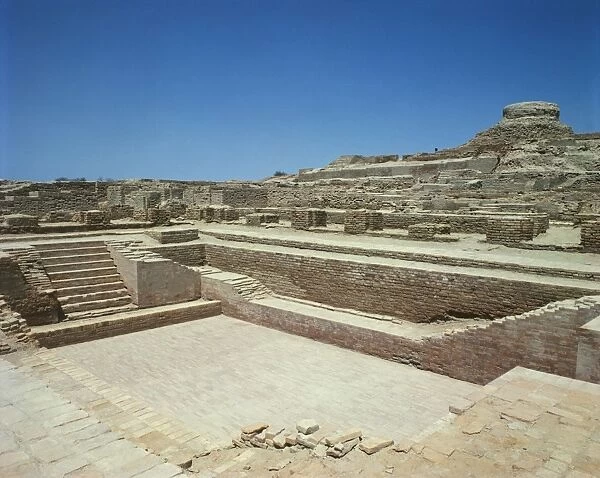Table of Contents
The Indus River, a vital artery of the Indian subcontinent, stretches across China, India, and Pakistan. Spanning approximately 3,180 kilometers, it is one of the longest rivers in the world. This river has nurtured civilizations, sustained agriculture, and shaped the history of the region.
Geographical Origin and Course:
The Indus River originates from the Tibetan Plateau near Lake Manasarovar. It flows through the Ladakh region of India and then enters Pakistan, traversing diverse landscapes before merging with the Arabian Sea. Its journey impacts several major regions, influencing both the environment and human activities.
The Upper Indus Region:
Glaciers and High Altitudes:
In its upper reaches, the Indus River is fed by significant glaciers like Siachen and Baltoro. These glaciers, situated in the Himalayas, ensure a constant flow of water throughout the year, especially during the summer months when the glaciers melt.
Significant Tributaries in the Upper Region:
In the upper region, the Indus River is augmented by numerous small streams and rivers descending from the Himalayas, adding volume and strength to its flow as it navigates through mountainous terrains.
Major Tributaries of the Indus River:
Overview of Tributaries:
The Indus River system includes five major tributaries: Jhelum, Chenab, Ravi, Beas, and Sutlej. These tributaries collectively form the Punjab region (meaning “Land of Five Rivers“) in Pakistan, each contributing uniquely to the river system’s hydrology and ecology.
Importance of Each Tributary:
These tributaries not only increase the water volume of the Indus River but also provide essential resources for agriculture, industry, and domestic use across the region.
Jhelum River:
Source and Path:
The Jhelum River originates from Verinag Spring in Jammu and Kashmir. It winds through the picturesque Kashmir Valley before entering Pakistan and joining the Chenab River.
Historical and Cultural Significance:
Historically, the Jhelum is notable as the site of the Battle of Hydaspes between Alexander the Great and King Porus. The river remains culturally significant, deeply embedded in local traditions and beliefs.
Chenab River:
Origin and Course:
The Chenab River is formed by the confluence of the Chandra and Bhaga rivers in Himachal Pradesh, India. It flows through Jammu before entering Punjab in Pakistan and eventually merging with the Indus.
Role in Agriculture:
The Chenab River is crucial for irrigation, supporting the cultivation of crops such as wheat, rice, and sugarcane. It is a lifeline for the agricultural economy in the Punjab region.
Ravi River:
Source and Flow:
The Ravi River rises in the Himalayas in Himachal Pradesh, India. It flows westward, crossing into Pakistan and joining the Chenab River near Ahmadpur Sial.
Economic Impact:
The Ravi River’s waters are essential for irrigation, particularly in Punjab, India. It supports various industrial activities along its course, contributing to the regional economy.
Beas River:
Origin and Journey:
The Beas River originates in the Himalayas near Rohtang Pass in Himachal Pradesh. It flows through the Kullu Valley before merging with the Sutlej River.
Environmental Influence:
The Beas River is known for its pristine environment, supporting diverse flora and fauna. It is also a popular destination for eco-tourism and adventure sports.
Sutlej River:
Source and Route:
The Sutlej River, the longest of the five tributaries, originates from Lake Rakshastal in Tibet. It flows through Himachal Pradesh and Punjab in India, and then into Pakistan, where it joins the Chenab River.
Historical Importance:
The Sutlej River has been integral to the Indus Valley Civilization, one of the world’s earliest urban cultures. Its waters continue to support millions of people through extensive irrigation networks.
The Indus Basin:
Description of the Basin:
The Indus Basin covers a vast area across China, India, and Pakistan. It is a complex system of rivers, canals, and reservoirs, vital for agriculture, industry, and domestic needs.
Ecological and Environmental Significance:
The Indus Basin is home to diverse ecosystems, ranging from arid deserts to lush wetlands. It supports numerous species of plants and animals, some of which are endemic to the region.
Indus River:
Water Volume and Flow Patterns:
The Indus River carries a substantial volume of water, significantly influenced by its tributaries and monsoon rains. Seasonal variations, particularly glacial melts in summer, play a crucial role in its flow patterns.
Seasonal Variations:
The river experiences high flows during the summer due to glacial melts and monsoon rains, and lower flows in winter. These variations are critical for planning irrigation and flood management strategies.
Economic Importance:
Irrigation and Agriculture:
The Indus River is the backbone of agriculture in Pakistan, providing water for the cultivation of staple crops. Its extensive canal system irrigates millions of hectares of farmland, ensuring food security for the region.
Hydroelectric Power:
Several hydroelectric projects along the Indus and its tributaries generate significant electricity, contributing to the region’s energy needs. Key installations like the Tarbela and Mangla dams are pivotal for power production.
Environmental Concerns:
Pollution and Degradation:
The Indus River faces severe pollution from industrial effluents, agricultural runoff, and domestic waste. Deforestation and over-extraction of water have led to ecological degradation, posing serious environmental challenges.
Conservation Efforts:
Efforts are being made to mitigate pollution and restore the ecological balance of the river. Initiatives include afforestation, pollution control measures, and sustainable water management practices to preserve this vital resource.
Cultural and Religious Significance:
Myths and Legends:
The Indus River is deeply embedded in the mythology of the region, featuring prominently in various legends and folklore. It is considered sacred in many traditions, symbolizing life and sustenance.
Rituals and Traditions:
Many communities along the Indus perform rituals and ceremonies to honor the river. These traditions highlight the deep cultural connection between the people and the river, reflecting its importance in their daily lives.
Conclusion:
The Indus River, with its extensive network of tributaries, is a cornerstone of life in South Asia. From its origins in the Himalayas to its confluence with the Arabian Sea, the river sustains millions through its waters. As we look to the future, balancing the economic benefits with environmental stewardship is crucial to ensure the river continues to thrive for generations to come.
FAQs
1. What is the length of the Indus River?
The Indus River is approximately 3,180 kilometers long, making it one of the longest rivers in the world.
2. Which countries does the Indus River flow through?
The Indus River flows through China (Tibet), India, and Pakistan.
3. What are the major cities along the Indus River?
Major cities along the Indus River include Leh, Skardu, Gilgit, Dera Ismail Khan, and Hyderabad.
4. How does the
Indus River support agriculture?
The Indus River supports agriculture through an extensive network of canals and irrigation systems, which water millions of hectares of farmland.
5. What are the main environmental threats to the Indus River?
Major environmental threats to the Indus River include pollution, over-extraction of water, deforestation, and climate change impacts on glacier melt.
For More Information : – Click Here







Leave a Reply